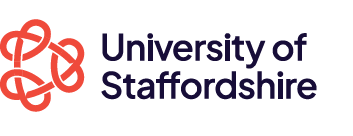Module Descriptors

TRANSPORT VISUALISATION 3
PROD50108
Key Facts
Digital, Technology, Innovation and Business
Level 5
20 credits
Contact
Leader: Richard Gilmartin
Hours of Study
Scheduled Learning and Teaching Activities: 60
Independent Study Hours: 140
Total Learning Hours: 200
Assessment
- Coursework weighted at 100%
Module Details
INDICATIVE CONTENT
In this module you will further investigate the role of computer modelling in the design of vehicles and future mobility systems. You will investigate the evolution of CAD/CAS to support the design process as a modelling and visualisation tool. You will consider the process of visualisation and explore how tools are suited to different stages of the design process. You will also develop an ability to show scale and context by using mixed reality and augmented reality techniques.
ASSESSMENT DETAILS
Coursework 100%
CAD file.
Professional Renders (typically 3 -5).
VR or 3D Printed output as appropriate.
[Learning Outcomes 1 -3]
CAD file.
Professional Renders (typically 3 -5).
VR or 3D Printed output as appropriate.
[Learning Outcomes 1 -3]
LEARNING STRATEGIES
Taking part in software demonstrations and tutorials.
Working one-to-one with staff to support your skills development.
Working independently, on-campus or remotely on your digital model.
Making use of video tutorials to support your learning.
Reflecting on your practice, mixing techniques to produce high-quality visualisations.
Working one-to-one with staff to support your skills development.
Working independently, on-campus or remotely on your digital model.
Making use of video tutorials to support your learning.
Reflecting on your practice, mixing techniques to produce high-quality visualisations.
LEARNING OUTCOMES
Module Learning Outcome
1. Create a digital model of a production vehicle using different techniques in the most accurate efficient way possible, and evaluate critically the appropriateness of different approaches to solving problems and propose solutions to problems arising from analysis.
University Learning Outcome
Application
Problem solving
Module Learning Outcome
2. Select the relevant digital technique to suit individual tasks as part of the design process.
University Learning Outcome
Learning
Module Learning Outcome
3. Present to the group your learnings and the skills you have developed in the module, and deploy key techniques effectively, demonstrating employable qualities and transferable skills.
University Learning Outcome
Communication
Reflection
1. Create a digital model of a production vehicle using different techniques in the most accurate efficient way possible, and evaluate critically the appropriateness of different approaches to solving problems and propose solutions to problems arising from analysis.
University Learning Outcome
Application
Problem solving
Module Learning Outcome
2. Select the relevant digital technique to suit individual tasks as part of the design process.
University Learning Outcome
Learning
Module Learning Outcome
3. Present to the group your learnings and the skills you have developed in the module, and deploy key techniques effectively, demonstrating employable qualities and transferable skills.
University Learning Outcome
Communication
Reflection
RESOURCES
Dedicated Design Studio
Specialist 3D Workshop facilities
Smart Zone – 3D Printing, Laser cutting, VR, 3D Scanning
Clay Modelling studio
CAD Labs
Seminar & Presentation Rooms
Access to relevant software (to include: Alias, Rhino, SolidWorks, Adobe CC, Microsoft Office, Keyshot, Keynote)
The Blackboard virtual learning environment will be available to support this module.
Specialist 3D Workshop facilities
Smart Zone – 3D Printing, Laser cutting, VR, 3D Scanning
Clay Modelling studio
CAD Labs
Seminar & Presentation Rooms
Access to relevant software (to include: Alias, Rhino, SolidWorks, Adobe CC, Microsoft Office, Keyshot, Keynote)
The Blackboard virtual learning environment will be available to support this module.
TEXTS
Integrated tutorials within the software should be utilised to support your learning, as well as YouTube and Forums.
LinkedIn Learning is another great resource in the learning of visualisation techniques.
We do not recommend purchasing books to learn software techniques as video content is much more valuable. Software instruction books also become quickly obsolete as software develops.
Simon, D [2007]: Cosmic Motors. Titan Books.
Simon, D [2017]: The Timeless Racer: Machines of a Time Traveling Speed Junkie. Design Studio Press. Szostak, P [2015]: The Art of Star Wars: The Force Awakens. Abrams.
Szostak, P [2020]: The Art of Star Wars: The Mandalorian. Abrams.
Springer, J [2010]: The Art of Tron: Legacy. Disney Editions.
Lapointe, T [2020]: Blade Runner 2049 - Interlinked - The Art: Titan Books.
LinkedIn Learning is another great resource in the learning of visualisation techniques.
We do not recommend purchasing books to learn software techniques as video content is much more valuable. Software instruction books also become quickly obsolete as software develops.
Simon, D [2007]: Cosmic Motors. Titan Books.
Simon, D [2017]: The Timeless Racer: Machines of a Time Traveling Speed Junkie. Design Studio Press. Szostak, P [2015]: The Art of Star Wars: The Force Awakens. Abrams.
Szostak, P [2020]: The Art of Star Wars: The Mandalorian. Abrams.
Springer, J [2010]: The Art of Tron: Legacy. Disney Editions.
Lapointe, T [2020]: Blade Runner 2049 - Interlinked - The Art: Titan Books.
SPECIAL ADMISSIONS REQUIREMENTS
N/A
WEB DESCRIPTOR
Automotive Visualisation is an exciting area of Study. In this module you will be putting together all the skills you have learned in the previous modules. The emphasis has been shifting towards a digital process in the Automotive and Transport Design Industries. It enables companies to be more agile, encourages entrepreneurship, and provides opportunities to build the UX and create other digital offerings. This is your opportunity to experience and learn these skills to apply in your own design projects.